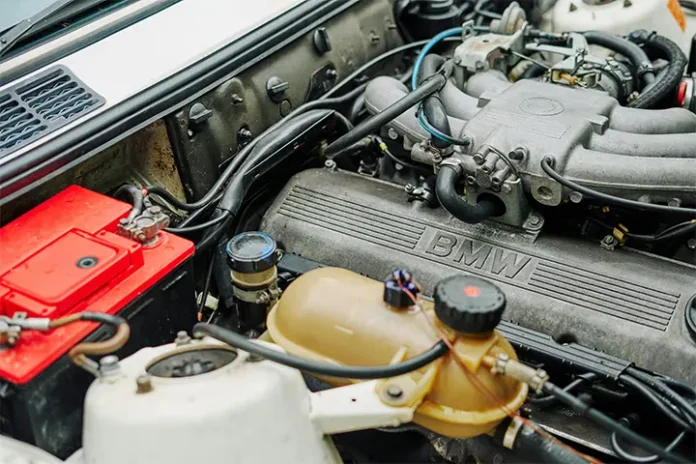The evolution of car battery technology is akin to a thrilling journey, a voyage that has revolutionized the way we move. Imagine a world where the hum of engines was more like the cluck of a chicken before the crow of dawn – a sound that signaled a new day, a new journey. Now, think about how far we’ve come. From the early days of cranking engines by hand to today’s sleek electric vehicles, the car battery has been the silent yet powerful heart of this transformation. Let’s embark on this voltage voyage, tracing the path of innovation that has brought us to the cutting-edge technology we see today.
The Dawn of the Car Battery
Once upon a time, the concept of starting a car was as imperious as a king demanding an audience. The earliest automobiles were started with a hand crank, a laborious task that required both strength and patience. This all changed in 1912, when Charles Kettering introduced the first electric starter, an invention that contained within it the promise of convenience and efficiency. This marked the beginning of the journey for the car battery, transforming it from a mere storage device to an essential component of automotive innovation.
As you trace the development of car battery technology, you’ll find it’s a tale of continuous improvement and relentless pursuit of power and endurance. In the 1920s, the introduction of lead-acid batteries revolutionized the automotive industry. These batteries were durable and efficient, capable of providing the necessary power to start the engine and operate the vehicle’s electrical systems.
The Rise of Alternative Technologies
Fast forward to the late 20th century, and you’ll find yourself in the midst of a technological renaissance. The world was not just seeking power; it was hungry for sustainability. The car battery had to evolve to meet these new demands. Enter the nickel-metal hydride (NiMH) battery – a technology that promised to reduce environmental impact while delivering reliable performance. As you can imagine, this was a pivotal moment in the journey of car battery technology.
Just as a chicken pecks its way out of its shell, the NiMH battery broke through the limitations of its predecessors. It was lighter, more efficient, and crucially, more environmentally friendly. Yet, this was just the beginning. The real game-changer was just around the corner.
The Lithium-Ion Revolution
As we step into the 21st century, the lithium-ion battery emerged as the new leader in car battery technology. These batteries offered unprecedented energy density and longevity, making them ideal for electric vehicles. You might wonder how a simple car battery could contain such power and promise. The secret lies in its chemistry and design, which allows for rapid charging and extended range.
Lithium-ion batteries have become the cornerstone of the electric vehicle revolution, enabling manufacturers to create cars that are not only efficient but also exhilarating to drive. The advent of this technology has made car battery replacement less frequent, as these batteries boast a longer lifespan compared to their predecessors.
Challenges and Innovations
However, the journey of car battery technology is not without its challenges. Issues such as battery degradation, safety concerns, and the high cost of materials have been persistent hurdles. But innovation thrives on adversity. Researchers and engineers are tirelessly working to develop new materials and technologies to overcome these obstacles.
For instance, solid-state batteries are emerging as a promising alternative. Containing no liquid electrolyte, these batteries offer increased safety and energy density. Imagine a battery that not only powers your car but also reduces the risk of fire and extends the vehicle’s range. This is the future that solid-state technology promises.
The Future Landscape
Looking ahead, the future of car battery technology is as bright as the sun rising on a new day. The push for sustainable and efficient energy sources will continue to drive innovation. As you consider the next car battery replacement, envision a world where your vehicle not only serves as a mode of transportation but also as a storage unit for renewable energy.
The integration of smart technology and energy management systems will be the next frontier. Picture a scenario where your car communicates with the grid, deciding the optimal time to charge or discharge energy based on real-time data. This is not mere fantasy but a glimpse into the near future of automotive technology.
Conclusion
Our voltage voyage through the development of car battery technology reveals a story of remarkable progress and potential. From the imperious beginnings of hand-cranked engines to the sophisticated, sustainable power sources of today, the journey has been nothing short of extraordinary. As you stand at the cusp of this ever-evolving landscape, remember that each car battery replacement is not just a maintenance task but a step into the future of innovation and sustainability.
Let us embrace this journey, for the story of car batteries is more than just a tale of technology. It is a testament to human ingenuity and the relentless pursuit of progress. As we continue to explore and innovate, may our voyage be as charged and exciting as the very batteries that power our world.
Also Read: Fleet Management With IoT To Optimize Transport And Routes

